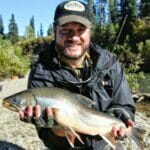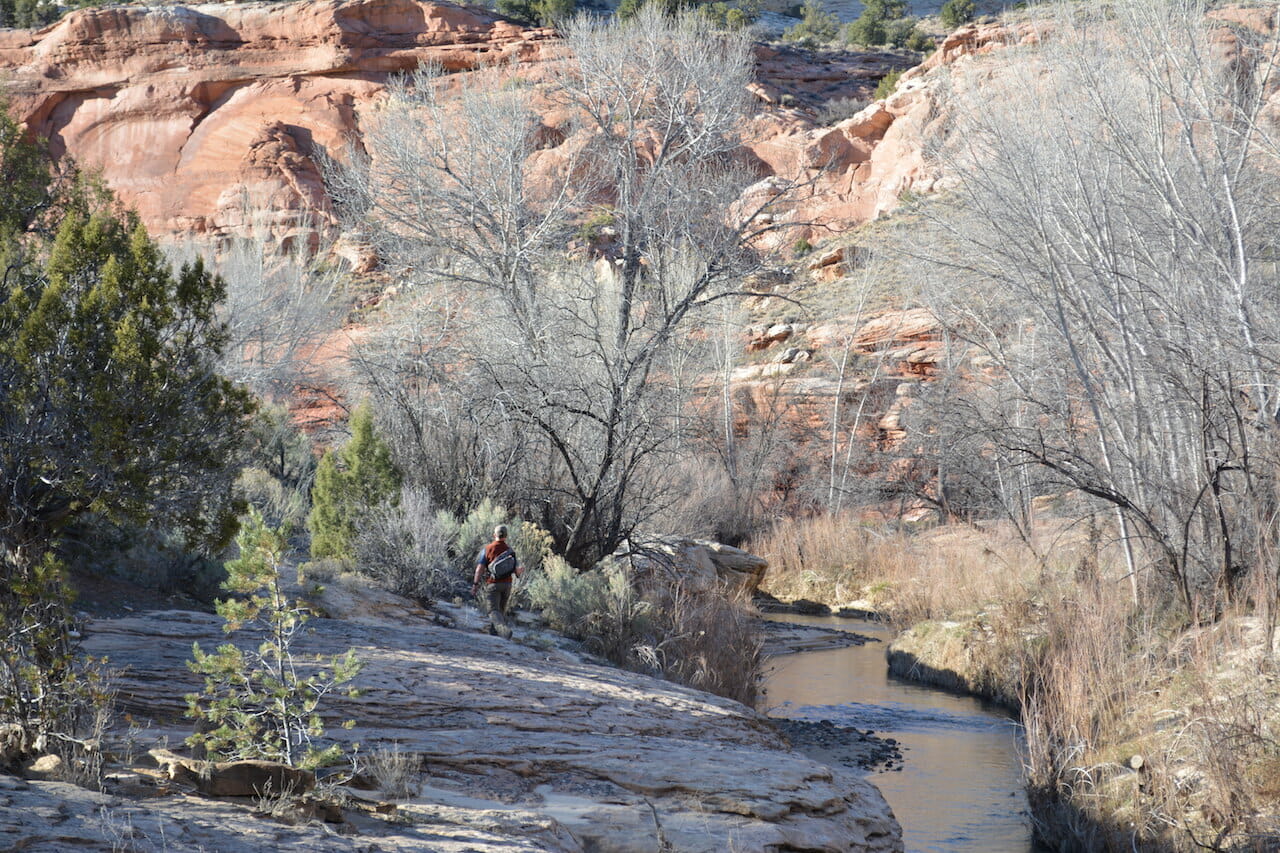An angler walks along the Escalante River in southern Utah looking for native Colorado River cutthroat. Cliff Wirick photo.
By Clint Wirick
The red rock country of southern Utah is not often considered trout habitat for good reason. Many waters in the southern reaches of the second driest state of our country are too turbid or warm for native trout, although there remain some high elevation populations of Colorado River cutthroat.
Upper Valley Creek, a tributary to the Escalante River, doesn’t hold trout and likely will never hold trout. If you’re using your reasoning skills then next you might be wondering why a U.S. Fish Wildlife Service Partners for Fish and Wildlife Program (PFW) biologist would invite Trout Unlimited to be involved in such a project.
You would think no trout means no TU, but that is not always the case. Here is how this unconventional partnership got started.
In 2009, a group of people formed what is known as the Escalante River Watershed Partnership because they were concerned about the invasion of non-native trees and the impacts to wildlife, habitat, communities, water quality and quantity, and overall watershed health.
The group is made up of state and federal agencies, landowners, non-profit groups, recreationists, and other concerned citizens. PFW and TU are among the members. Other partners include: Grand Staircase-Escalante Partners (GSEP), Natural Resource Conservation Service (NRCS) and two private landowners. As the Southern Utah Project Leader, Jordan Nielson represents Trout Unlimited in the partnership.
The problem is non-native woody invasive plants like tamarisk (sometimes called salt cedar) and Russian olive. These non-native species such have, and continue to, outcompet native plants like willow, cottonwood, native grasses, shrubs and flowering plants.
The invasives also have a negative impact on such a broad range of wildlife that listing them all here would take too long. As an example, there is almost always reduced bird species diversity and abundance in tamarisk and Russian olive stands versus native plant communities. These invasive species also change how rivers function by encroaching banks and narrowing the channel. They change water quality and quantity, soil properties, and have several other negative ecological and social impacts.
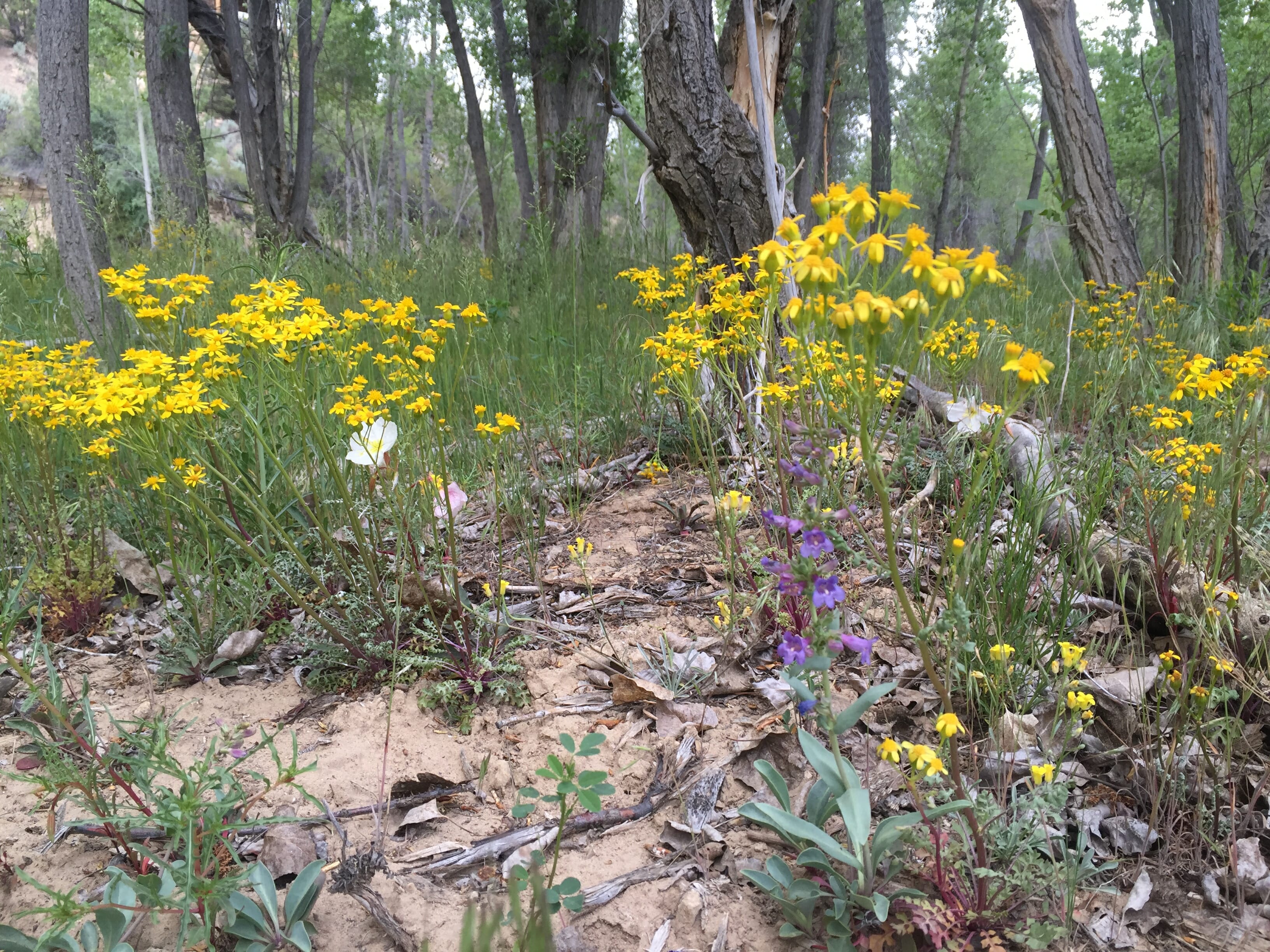
Native plants flourished after invasive plants were removed in Upper Valley Creek, a tributary to the Escalante River in southern Utah. Clint Wirick photo.
The Escalante River serves as the outlet for the Escalante Watershed. Watersheds are a sort of ecological petri dish — what happens on one side will affect the outcome somewhere else within that dish.
This is where partnerships play a role. This specific project doesn’t provide anglers with direct opportunity for trout fishing, but the watershed does and trout reside in the Escalante River and other tributaries downstream of Upper Valley Creek. In fact, the south side of Boulder Mountain, the upper end of the watershed, has some of the best trout fishing waters Utah has to offer. This is why TU is one of the many partners involved with the Escalante River Watershed Partnership.
There may be no direct benefits to trout in Upper Valley Creek, but indirect benefits lie elsewhere in the watershed because the project is reducing invasive plant species seed source that can move a long distances by water, animals and humans and could end up near trout waters.
By establishing beneficial native vegetation we create a beneficial seed source. Invasive vegetation like tamarisk and Russian olive can also alter the chemical properties of water. What happens upstream moves downstream, potentially to trout waters.
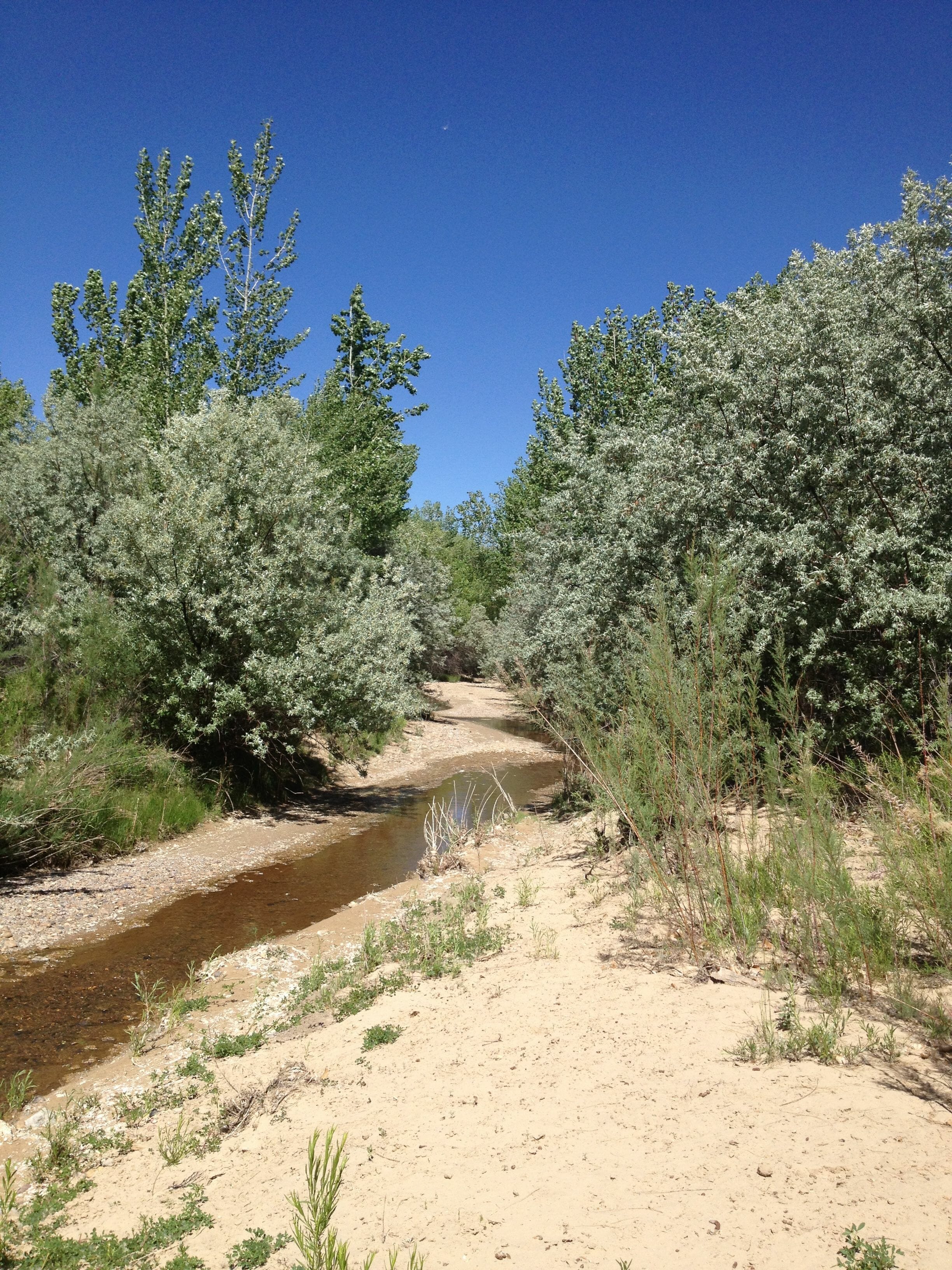
A picture of Upper Valley Creek before invasive trees and other plants were removed. Clint Wirick photo.
Projects like this one benefit migratory songbirds, species the U.S. Fish & Wildlife Service is charged with managing. Species like yellow-billed cuckoo (a federally threatened species), Virginia’s warblers, broad-tailed hummingbirds, and too many other species to list here benefit from native habitat restoration. Native cutthroat trout are also a priority species for PFW and benefits to non-trout waters like Upper Valley Creek benefit native trout elsewhere in the watershed.
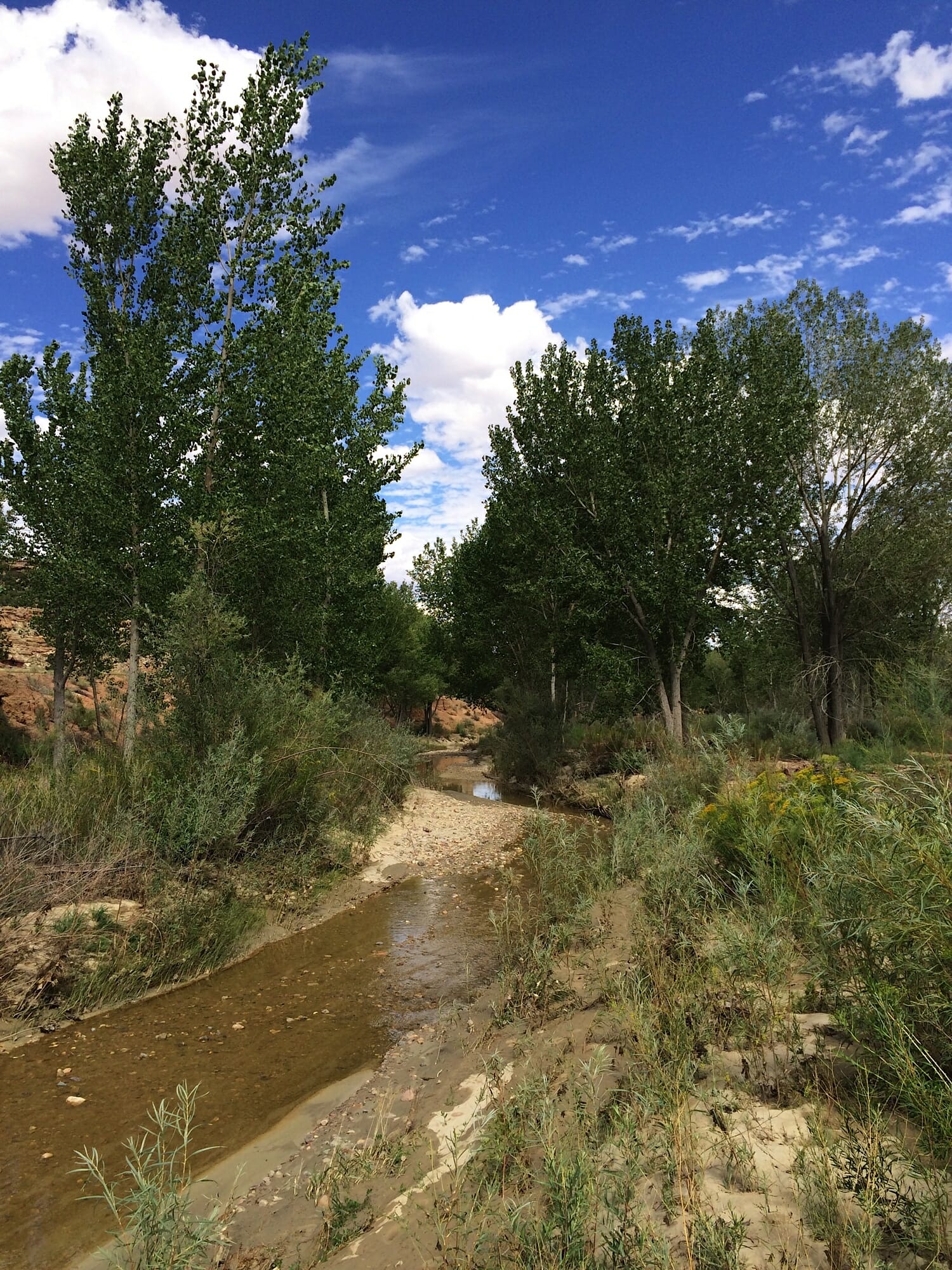
The same picture on Upper Valley Creek after nonnative plants were removed. Notice the missing trees that had been in front of native Cottonwood trees. Clint Wirick photo.
So these partnerships are important. They get work done, provide a wide range of expertise, and projects can be done at a much larger more meaningful scale.


